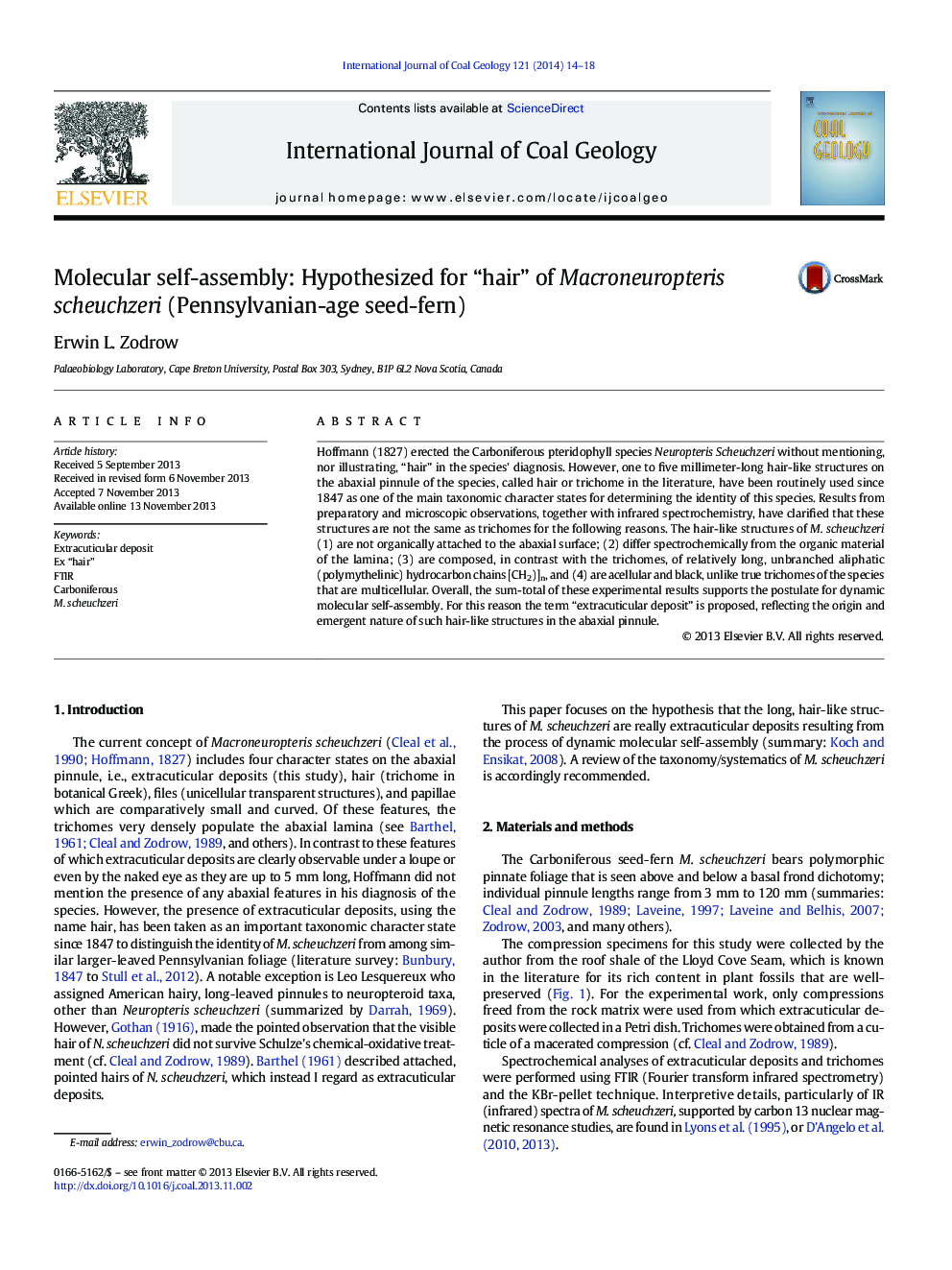| Article ID | Journal | Published Year | Pages | File Type |
|---|---|---|---|---|
| 1753117 | International Journal of Coal Geology | 2014 | 5 Pages |
Abstract
Hoffmann (1827) erected the Carboniferous pteridophyll species Neuropteris Scheuchzeri without mentioning, nor illustrating, “hair” in the species' diagnosis. However, one to five millimeter-long hair-like structures on the abaxial pinnule of the species, called hair or trichome in the literature, have been routinely used since 1847 as one of the main taxonomic character states for determining the identity of this species. Results from preparatory and microscopic observations, together with infrared spectrochemistry, have clarified that these structures are not the same as trichomes for the following reasons. The hair-like structures of M. scheuchzeri (1) are not organically attached to the abaxial surface; (2) differ spectrochemically from the organic material of the lamina; (3) are composed, in contrast with the trichomes, of relatively long, unbranched aliphatic (polymythelinic) hydrocarbon chains [CH2)]n, and (4) are acellular and black, unlike true trichomes of the species that are multicellular. Overall, the sum-total of these experimental results supports the postulate for dynamic molecular self-assembly. For this reason the term “extracuticular deposit” is proposed, reflecting the origin and emergent nature of such hair-like structures in the abaxial pinnule.
Keywords
Related Topics
Physical Sciences and Engineering
Earth and Planetary Sciences
Economic Geology
Authors
Erwin L. Zodrow,
